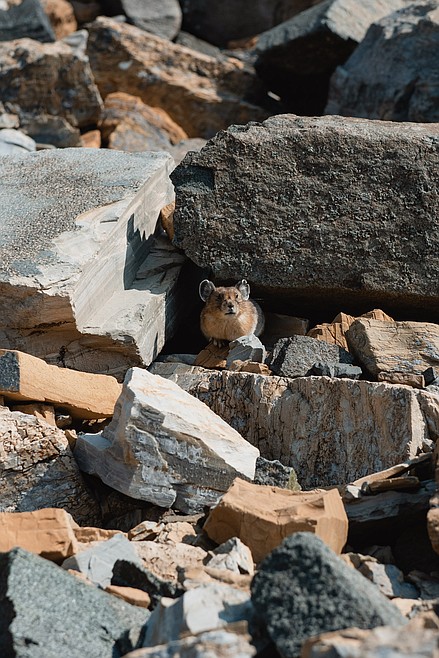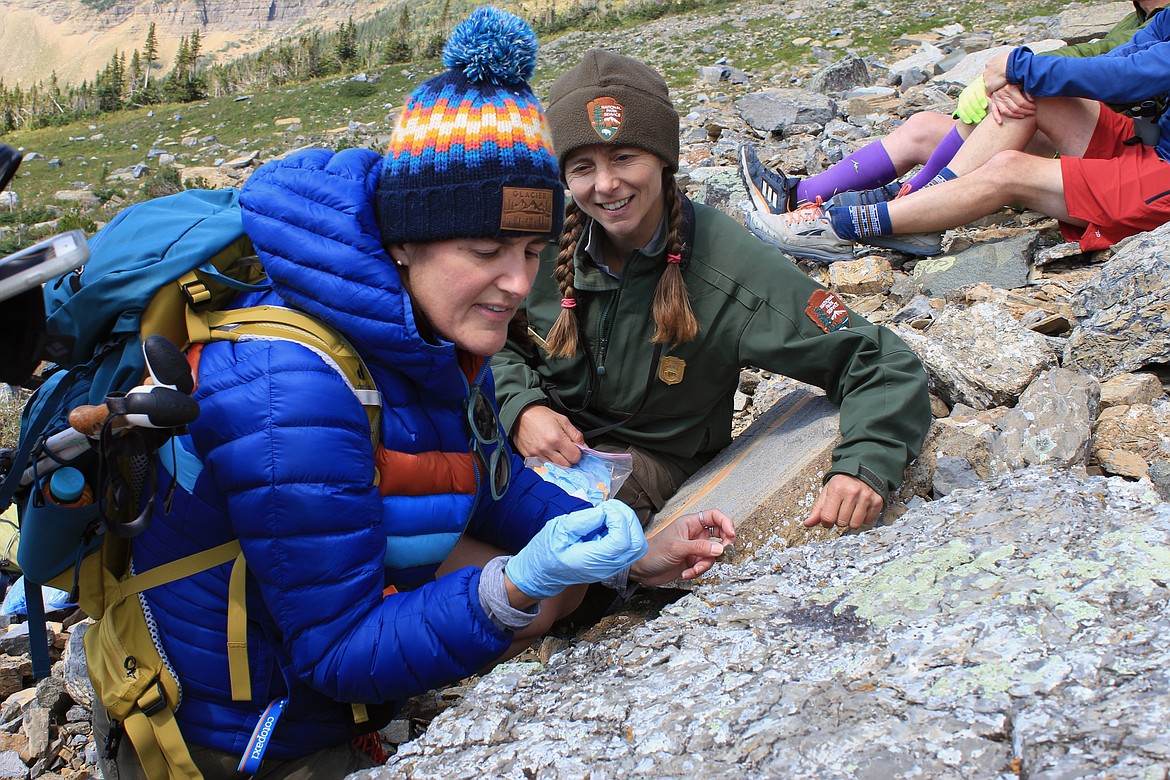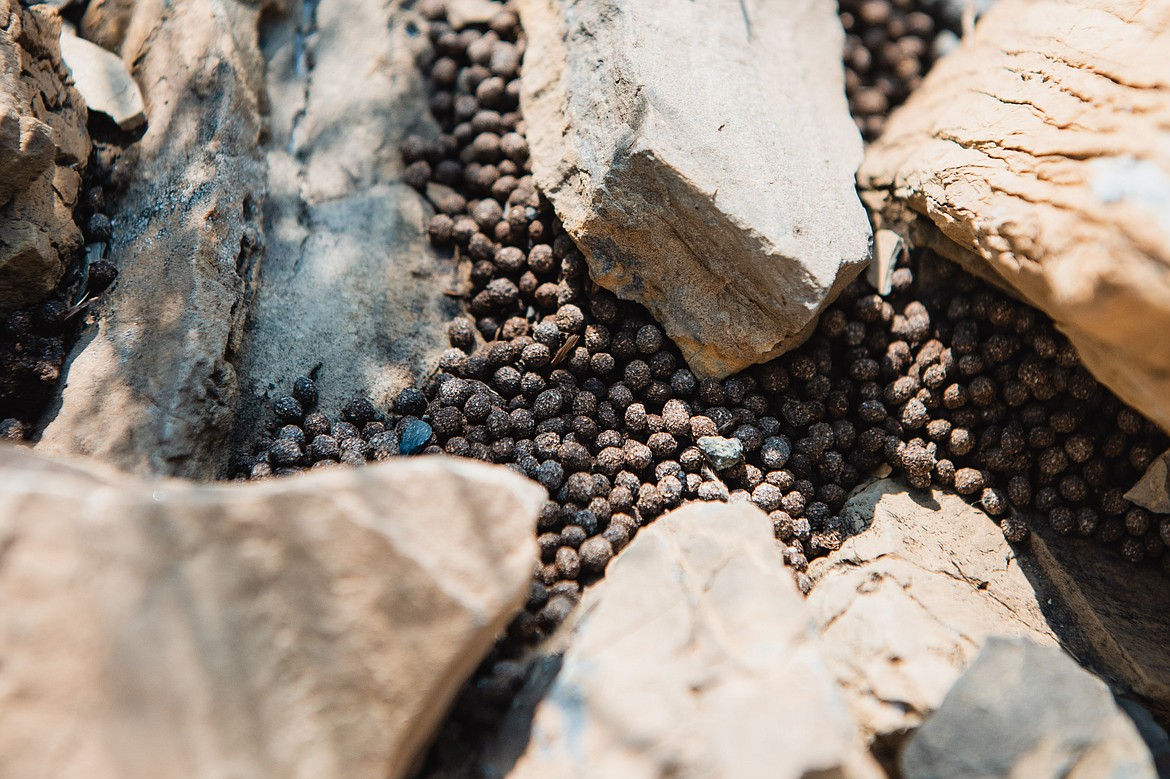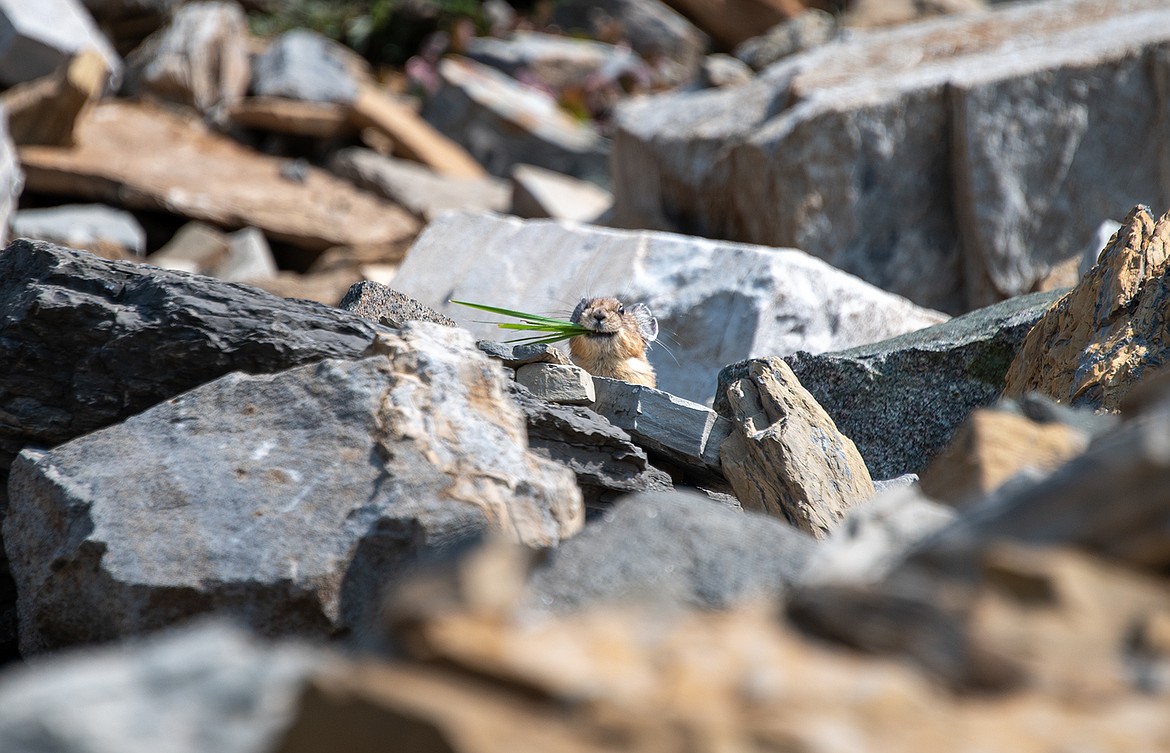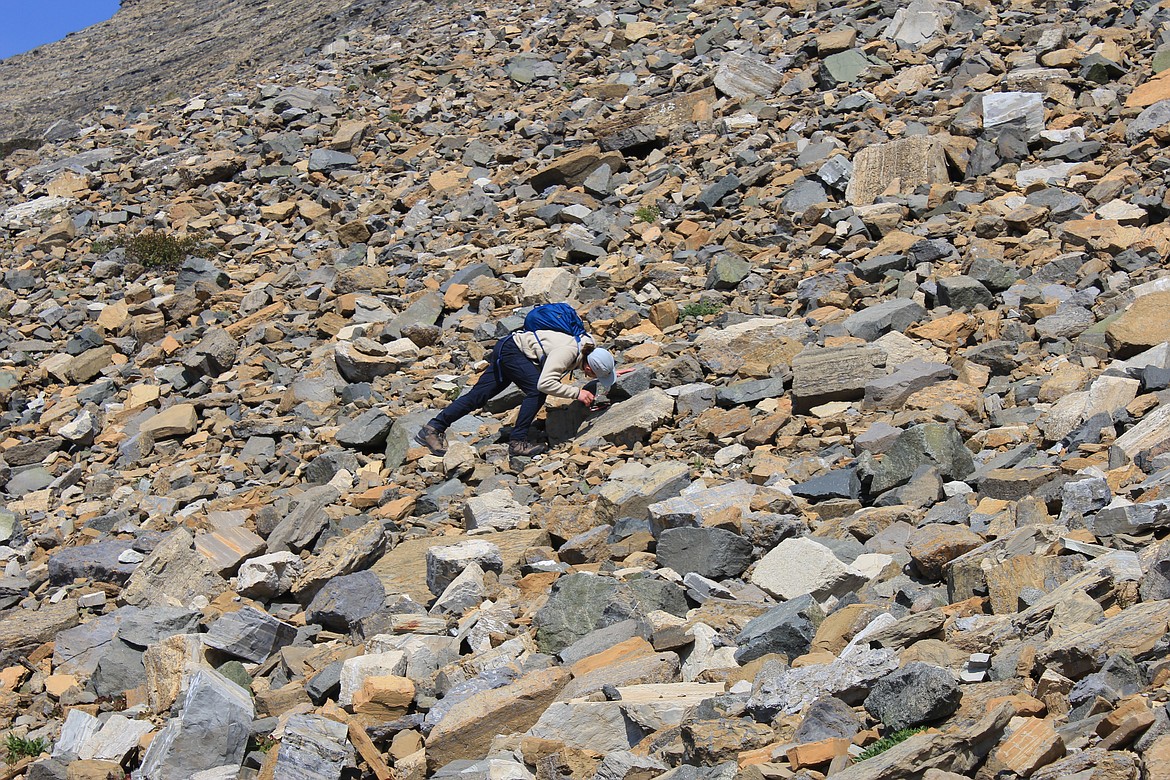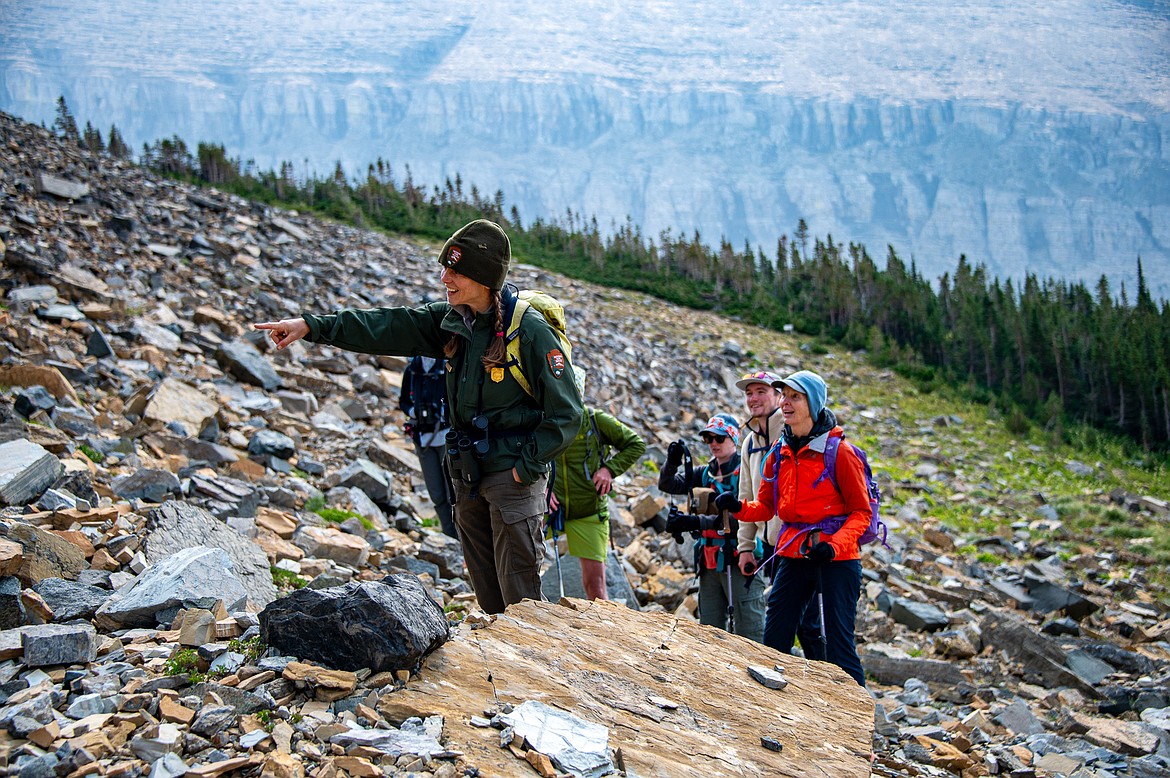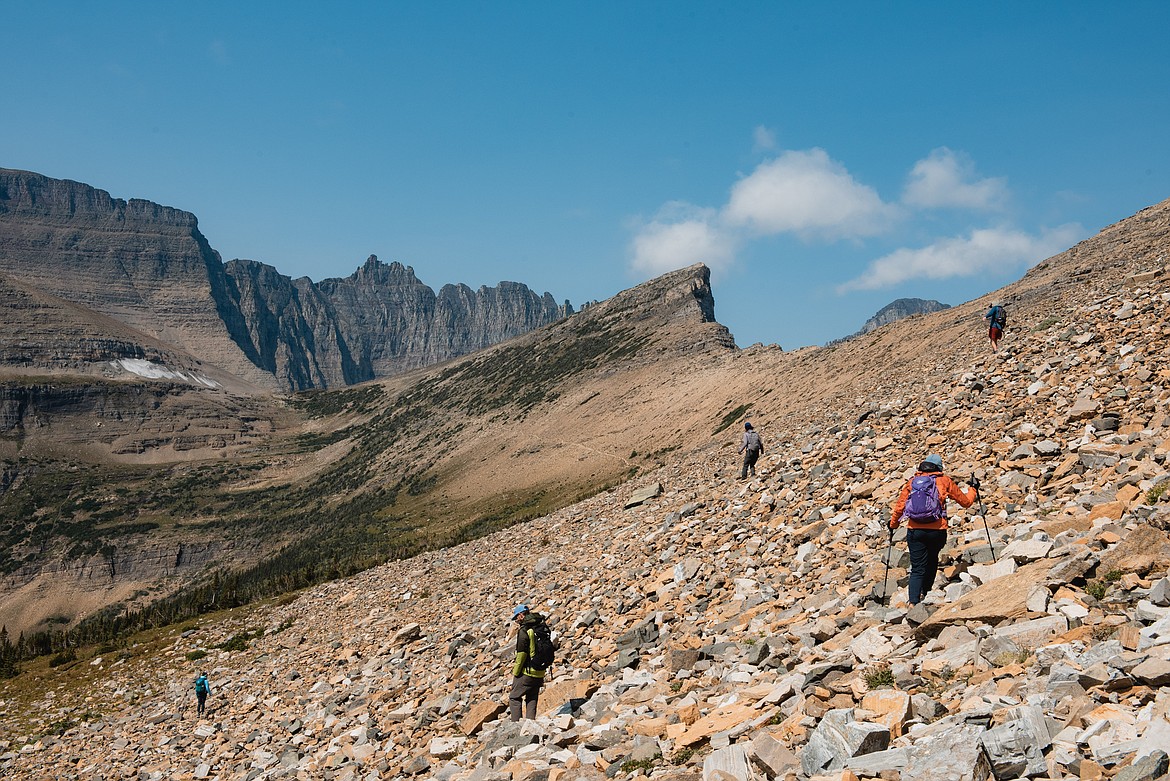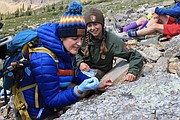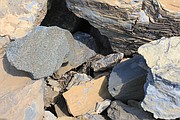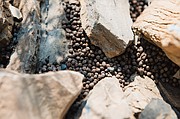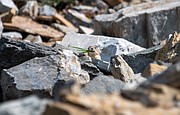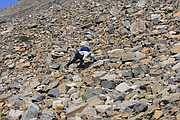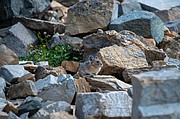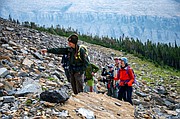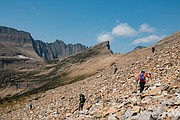Hay piles and pellets: searching for pikas in Glacier National Park
Hiking among the many talus slopes in Glacier National Park, one might be so lucky to catch a glimpse at the elusive pika. The tiny member of the rabbit family is losing footing in similar habitats across the country due to a warming climate.
Researchers are joining forces with citizen science volunteers to see how the population is faring in Glacier. On a recent sunny August morning Glacier National Park Conservancy staff hiked with Glacier’s Citizen Science Program Manager Jami Belt to the Piegan Pass trail to hunt for pika pellets.
Volunteers collect and catalog the pellets using an app. The pellets contain skin cells and will be sent off to a lab in Missoula for analysis. Extracting DNA from those skin cells will give information to researchers about the pika who left the pellet, but also how genetically connected they are to one another and how they move across the landscape.
Stopping just before Piegan Pass and making their way up the talus slope, Belt instructed everyone to start looking for hay piles — which can be found in the shadows or crevices of large rocks. Hay piles are evidence of a pika’s hard work stocking up on vegetation for the winter, through which they do not hibernate.
It wasn’t long before a pika with its short limbs and round body was spotted darting between rocks, coming up for a perfect pose. The small creatures with a coat of fur have short, rounded ears.
University of Utah professor and pika researcher Lucas Moyer-Horner dons a blue flatbill hat with a pika embroidered on the front. He was familiar with Glacier as an undergrad at the University of Wisconsin when he got the idea to study pikas in 2007.
He conducted that study and presented his efforts to the Glacier National Park Conservancy, which funded the project for the following summers in 2008 and 2009. That research consisted of surveying talus fields in the park to look for pikas or signs they were there, like hay piles and pellets.
He said back then, populations in the park were doing quite well. Now 15 years later, Moyer-Horner is back to see how pikas are doing.
“This go around, the primary goal is to re-survey the sites that we surveyed 15 years ago, to see if there are any changes and density in certain patches, increases, decreases,” Moyer-Horner said. “We want to see what has been the population trend: increase, stay the same, or decrease — and if so, where are there certain spots in the park where they seem to be doing better than others?”
In 2008 when Moyer-Horner was conducting his research, there was a petition to put pikas on the endangered species list. Back then, Belt said not much was known about pikas in Glacier Park and scientists began brainstorming ways they could contribute to the review of the endangered species listing. The park had already started its Citizen Science Program conducting loon surveys and Belt decided looking for pikas might be a good fit for volunteers.
“They're really cute and it is really rewarding. It's kind of like a scavenger hunt to go out and look under rocks and in little hidey holes for signs of pikas,” Belt said.
According to the National Wildlife Federation, although the polar bear has famously been a symbol of climate change for decades, pikas are well-positioned to compete for that unwanted title.
In addition to how warmer temperatures bring changes in vegetation and reduced snowpack, Pikas can only tolerate a fever of four degrees before it becomes fatal.
Moyer-Horner said pikas already have a high core body temperature like other lagomorphs, with thick fur that comes in handy during the frigid winters but isn’t good at dissipating summer heat. This means pikas are limited in how much they can move around when it is hot outside, impacting their ability to gather enough vegetation to survive the winter.
“Many species as the climate changes and weather changes, they just migrate, or they just go somewhere else that has more food available, has better temperatures or better precipitation. Whereas pikas really are stuck in their talus habitats and they're pretty poor at dispersing from one patch to another,” Moyer-Horner said.
A 2000 study by researcher Eric Weaver was one of the first times scientists began paying attention to the drop in pika populations in the United States. Weaver looked at areas where people said they saw pikas, following up on sightings dating back to the 1910s. The areas he surveyed included the Great Basin area, the Sierra Nevadas and southern Oregon, among others. Moyer-Horner said in a significant number of the places Weaver went, he found no signs of pikas.
“The main factor was, that they were disappearing from their lowest elevation sites, which is correlated to the highest temperatures. So that's when people really started to think, could high temperatures be a problem for pikas?” Moyer-Horner said.
Glacier Park is the northernmost area in the lower 48 where pika research is being conducted. Belt said DNA extracted from the pika pellets from this year’s study will look at the resiliency of the population.
“The more genetic diversity a population has, the more likely they are going to be able to adapt to changing conditions and continue to move around on the landscape,” Belt said.
Around 50 volunteers are working on the pika project. During this survey in August, staff with the Glacier National Park Conservancy were invited to take part in the study, which they continue to fund.
Conservancy Executive Director Doug Mitchell said it’s important to be able to have volunteers in an outdoor classroom with professionals like Belt, collecting data that will inform decision-making about how to mitigate climate change.
“We think about taking care of this place — we're sitting in this magnificent landscape, so blessed to be here. We want for future generations to have the experience that we just had of watching a pika pop out of the rocks,” Mitchell said. “And to be able to do that scientific research that will educate policymakers about those kinds of decisions is really important and it's hard work.”
The DNA extractions from the pika pellets will be done over the winter, but they won’t have a full genetic map ready until the study concludes at the end of next year.
Once their genetic map is completed scientists will have a good idea of how to help mitigate declining isolated populations. This could include identifying and protecting key connectivity corridors between talus fields, for example. But anecdotally, Moyer-Horner said so far this summer they are seeing pikas occupy most of the sites they surveyed more than a decade ago.
“That's really good news. But, we really haven't had a chance to look at the data to see if there's any changes in population density yet, but I'd say the early signs are that pikas seem to be doing pretty well in the park,” Moyer-Horner said.
To learn more about the park’s pika surveys, go to nps.gov/glac and search under their Citizen Science page, or visit the Glacier National Park Conservancy’s Current Projects page on their website glacier.org.
Reporter Taylor Inman can be reached at 406-758-4433 or by emailing tinman@dailyinterlake.com.


